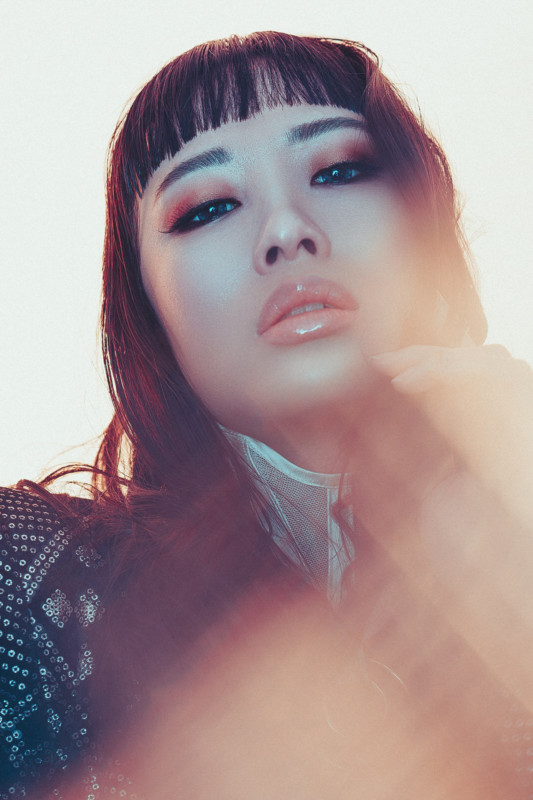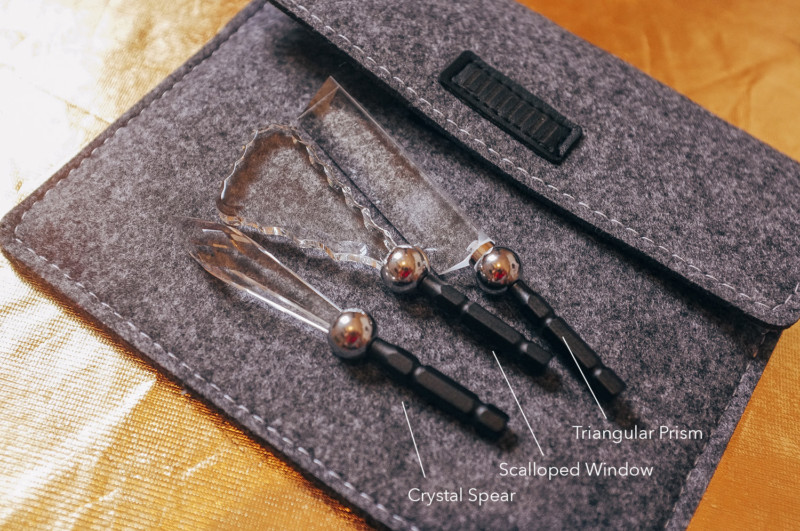Review: Lensbaby Omni is a Fun Way to Get In-Camera Effects
![]()
Lensbaby has become a bit of a household name in recent years and for those of us searching for a more unique look to our images, Lensbaby has been there to provide a whole host of creative solutions. Its latest product is no different, but this time around it isn’t producing a new lens, but instead a ‘creative filter system’ called the Omni.
Who is Lensbaby?
If you’re unfamiliar with Lensbaby: it is predominantly known for its creative lens solutions. These lenses, now more colloquially and affectionately referred to as ‘art’ lenses, offer a different perspective for photographers looking for something outside of the norm. Its lenses range from the more aggressive lens distortions like the ‘Edge’ that creates a tilt-shift look, to the more subtle ‘Velvet’ lens that simply softens the edge of the frame, creating a very reminiscent look of the bygone era of photography.
I’ve personally used Lensbaby lenses for many years and long before the company ever reached out to me to get my feedback on some of its new products.
But Lensbaby is known for making products that ‘bake’ the visual effect into the actual shot at the point of capture. This style of creativity can scare some younger photographers who rely on the comfort of the ‘undo’ command in Photoshop, but for those willing to embrace a creative solution whilst actually taking a photograph with a camera, love what Lensbaby produce.
The Omni… is Not a Lens
As I mentioned, Lensbaby is known for its lenses so I think it is VERY keen to make it clear that its latest product is NOT a lens. Its marketing describes the Omni as a ‘creative filter system’ and although that’s a fairly accurate description, let’s break down what that actually looks like.
The Omni is made up of multiple parts, but the key is the metal disc that screws directly to the front of your current lens via the lens filter thread all lenses have.
You then attach sliding magnets to that disc and to them you attach the actual ‘filters’.
It’s a very simple system but one that works perfectly.
What’s in the Omni Box?
When you receive your Omni, this is what’s in the box.
![]()
![]()
![]()
![]()
Inside the box will be some instructions and two grey fabric pouches. In the larger one will be the metal disc, magnet sliders, and filters, and in the other will be a selection of step up/down rings for other sized lenses plus a grip to remove and attach them. I’ll talk more about these step rings later.
Omni Setup
As I mentioned, it’s super-simple. Take the metal plate (affix the appropriate step ring if you need it), ensure the magnet sliders are already attached and then screw it to your lens via the lens filter thread. Once it’s on you’re then free to attach the filters directly or via the additional ‘stalks’ to give you more creative options.
![]()
![]()
![]()
Okay, but What the Hell are These ‘Filters’ You Keep Mentioning?!
So now we know how it works, what does it actually do? Well, the purpose of the Omni is to hold a variety of filters in front of your lens so that they appear in the shot when you take the picture. So what are the filters? Well, the base Omni pack comes with three filters; the Crystal Seahorse, Stretch Glass, and the Rainbow Film. And these three probably provide the most variations in looks.
![]()
By shooting through these you will get foreground distortions and light flares that can create some very unique looks indeed.
The Results
So now that we know how it works and what it does, what do the images look like when you use the Omni?
The following images were taken by me whilst I was testing the new Omni system a few weeks ago.




I think the above images should give you a pretty good idea of what the system does, but if you’re still unclear, the out of focus foreground blurring and colors in these shots are all produced by the Omni filters.
Omni Crystal Expansion Pack
Also; to the eagle-eyed among you that may have noticed a fourth image and filter in use above, that is actually from the Omni Crystal Expansion Pack that contains an additional 3 filters.
The additional 3 filters are the Crystal Spear, Triangular Prism, Scalloped Window.

Tips on Using the Omni
Bottom line; I think this product is incredibly easy to use. Firstly, it’s not like an art lens that requires manual focus skills. Secondly, the Omni is very much a product that is ‘what you see, is what you get’. You look through the viewfinder, tweak, move, push and pull the filters around until you see something you like.and take a shot.
But there are a few pointers that I’ll add that can set you on the right path, to begin with.
![]()
Head Outside. I shoot almost exclusively with flash in a studio, but the Omni is actually a little easier to use outside where there is more light to work with.
More Light. The Omni really comes alive when light is hitting the filters in front of the lens, so if you’re not seeing much of an effect, consider a position where more light is striking the filters.
Longer Lens. The Omni effect is reliant on the filters in front of the lens being out of focus. So using longer lenses will help with this and lenses of 50mm or longer will be fine.
Aperture. In keeping with the longer lens, consider shooting wide open with your aperture as well. Using apertures of f2.8 or wider, for example, will ensure that the filters are completely out of focus and will bed into the surrounding image a little more.
So try shooting outside with plenty of light and use a lens of at least 50mm with a wide open aperture like f2.8 to get the best results with your Omni.
Opinions and Thoughts
I personally think this product is going to be easy for you to decide if you like it or not. The images above speak for themselves regarding what this product does and how you achieve the intended look. You need almost no skill to make these effects appear in your shots and it really will come down to whether you like the look it produces or not.
The Omni will do its job of adding this effect to your image, so if the image is already good without the effect, I think the Omni can add another layer of visual interest that may well enhance the final shot. But don’t think these Omni’s will make an already poor image more engaging, because that’s not what this is.
If you’ve read this far then I’m going to assume you’re interested in what it’s doing so I’ll elaborate on a few strengths I think the Omni has.
So what’s wrong with me just holding the ‘filters’ in front of my lens with my hand?
It is of course very possible to simply hold some filters in front of your lens. I’ve held everything from, crystals, lightbulbs and even chair legs in front of my lens before, but the Omni offers a few benefits over you using your regular ol’ meat-hooks.
Two hands. Holding stuff in front of your lens means you only have one hand left to hold the camera. With a DSLR and 24-70mm lens, this becomes ‘literally’ painful to do pretty quickly. The Omni gives you both your hands back to hold and steady the camera.
Professionalism. The Omni is a more professional solution to what can look a little concerning to clients. I’ve seen professional photographers holding sandwich bags in front of their lenses at a wedding before, and although I’m all for ‘getting-the-shot’, this can be unnerving to those not familiar with our dedication to the craft. The Omni looks very clean and very professional so if you’re after a more polished approach to in-camera effects, the Omni provides that.
Consistency. One issue I’ve always had with holding something in front of my lens in the past was consistency. Sure I might get an awesome effect in one shot, but the next image will be completely different as the filter moves. The Omni holds the filter exactly where you want it and keeps it there so you can recreate that exact same look again and again and maybe even with another subject. Imagine setting up some lights for a series of portraits and wanting a consistent look across multiple people. The Omni can ensure that happens.
Video. Although I don’t shoot video, I think the Omni is a great solution for video or in fact any tripod work. The Omni sits on the lens and gives you a consistent look throughout an entire scene. Again, this would be very hard to do with you simply holding it. Plus if you are on a tripod you can be looking through the lens and tweaking the filters to exactly the right point and then when you let go they stay exactly where you left them thanks to the magnets.
JakeHicksPhotography (9 of 14) 1500 square.jpg
Your Lens Size
The whole Omni system does really hinge on you attaching the whole thing to your lens, so you really need to make sure the Omni fits your proffered lens choice. To try and accommodate as many photographers as possible, Lensbaby has made the Omni in two sizes and in each of those two sizes there are also a variety of step rings so that the metal disc will fit as many of your lenses as possible.
![]()
Here are the two base packs they offer.
1. The smaller metal ring Omni has a 58mm thread and includes step-down rings to also fit 49mm, 52mm, & 55mm lens threads.
2. The larger metal ring Omni has a 77mm metal ring and includes step-up/down rings to also fit 62mm, 67mm, 72mm, & 82mm lens threads.
So essentially if you have lenses with a diameter of 49mm, 52mm, 55mm, 58mm, 62mm, 67mm, 72mm, 77mm or 82mm, then the Omni has you covered.
Just be sure to select the right size pack you need when purchasing.
Tip: Your lens diameter is often displayed not only on the front around the glass but also on the reverse of your lens cap.
Closing Comments
As I mentioned above, I think this product really does speak for itself and you’ll likely know by now as to whether this is for you or not.
I think that if you’re a fan of Lensbaby products already or other art lenses that bake visual effects directly into your shot at the point of capture, then you’ll love the Omni.
On the other hand, if you’re somebody who is hesitant about the permanent nature of in-camera effects and instead prefers to add effects later in Photoshop, the Omni is perhaps not for you.
This distinction may seem obvious to many of you, but when this product released a few days ago, I saw the usual trolls rushing to the comments sections of every Omni post berating this product when its effects can supposedly be produced in Photoshop with more control and far less permanence. I must admit, I’m puzzled by the curious nature of those individuals bothering to engage in those articles when they clearly have no interest in the product, surely we are beyond this fairly dated argument now.
Yes, lighting effects can be added in Photoshop later on. But you may ask yourself how good they actually look when added afterward. After all, systems like the Omni use the refraction of light in the surrounding area when crystals and prisms are concerned. It is simply impossible for Photoshop to augment light data from areas not within the camera frame. As a result, I firmly believe that if you’re interested in creating these optical foreground elements in your shot, then doing so at the point of capture will always look far better compared to doing it in post with those painfully dated and very obvious overlays.
Oh, and it’s actually just a ton of fun to use and experiment with the Omni while shooting, and in my opinion, it’s just far easier and simpler to do it in camera than in post-processing.
Full disclosure: I was sent an Omni by Lensbaby to test and provide feedback. I was not paid to write this article, but I have been given a discount code (JAKEHICKS10 gets you 10% off on all Lensbaby products at WEX Photographic in the UK) for you guys to use if you are interested in purchasing one for yourself. If you do use that code then I will see a small commission at some point in future, but in reality that will amount to a couple of beers and I really can’t see myself retiring off of this anytime soon. My point being: I believe this article to be an honest opinion on how I feel about this product.
About the author: Jake Hicks is an editorial and fashion photographer based in Reading, UK. He specializes in keeping the skill in the camera and not just on the screen. If you’d like to learn more about his incredibly popular gelled lighting and post-pro techniques, visit this link for more info. You can find more of his work and writing on his website, Facebook, 500px, Instagram, Twitter, and Flickr. This article was also published here.